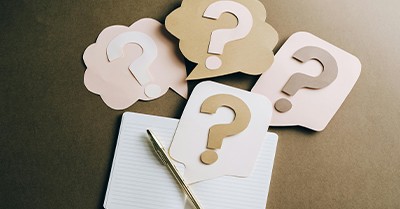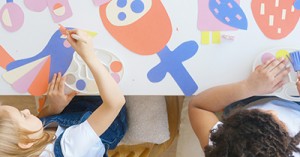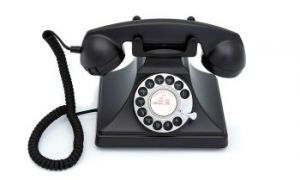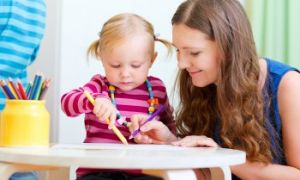Halloween is more than costumes and candy; it's a cultural moment that invites play, storytelling, and community connection. But beneath the surface, it also offers a rich opportunity for reflection. What are we celebrating, and how does it shape our values, identities, and relationships? Here’s a thoughtful set of critical reflection questions for families considering whether to celebrate Halloween, designed to support values-based decision-making, emotional safety, and inclusive dialogue.
Values & Beliefs
- What does Halloween mean to each of us? Are there parts that feel joyful, uncomfortable, or confusing?
- Do our cultural, spiritual, or personal beliefs align with Halloween traditions?
- Are there aspects of Halloween that feel respectful and inclusive or ones that challenge our values?
Emotional Safety & Child Voice
- How do children feel about Halloween? Excited, scared, curious, or unsure?
- Are there ways to celebrate that support emotional safety and pride?
- What would children like to keep, change, or create if we celebrated in our own way?
Identity & Expression
- Do costumes and characters help us express something meaningful, or do they reinforce stereotypes or discomfort?
- Can we design alternatives that reflect our families' creativity, culture, or values?
Consumerism & Sustainability
- Are we comfortable with the commercial aspects of Halloween (e.g., costumes, candy, decorations)?
- How can we reduce waste or shift toward more sustainable, creative traditions?
Connection & Community
- Does Halloween help us connect with others—or does it feel isolating or performative?
- Are there ways to engage with our community that feel authentic and kind?
- If we choose not to celebrate, how can we communicate that respectfully and offer alternatives?
Cultural Awareness & Inclusivity
- What cultural origins and meanings does Halloween carry, and how do they influence how we celebrate today?
- Are there elements of Halloween that might unintentionally exclude or misrepresent certain cultural or spiritual beliefs?
- How can we ensure that costumes and decorations are respectful and avoid cultural appropriation?
Emotional & Psychological Impact
- How do Halloween themes (e.g., fear, darkness, disguise) affect children’s emotional well-being?
- What messages are children receiving about safety, identity, and morality through Halloween stories or media?
- How can we balance playful spookiness with emotional safety and reassurance?
Educational & Ethical Considerations
- What values are being reinforced through Halloween activities in educational settings?
- Are we promoting kindness, creativity, and community—or competition, consumption, and fear?
- How can Halloween be used as a springboard for critical thinking, storytelling, or cultural exploration?
Consumerism & Sustainability
- What role does consumer culture play in shaping Halloween traditions?
- How can we reduce waste and promote sustainable practices in costumes, decorations, and treats?
- Are there ways to celebrate that prioritize creativity and reuse over buying new items?
Child Voice & Agency
- How do children express their preferences and ideas about Halloween? Are their voices truly heard?
- What opportunities exist for children to co-design Halloween experiences that reflect their identities and interests?
- How can we scaffold pride, reflection, and emotional literacy through Halloween documentation or art?
Further Reading
Halloween Activities For Children
Celebrating Halloween In Early Childhood Settings
Halloween Songs and Rhymes Posters
Celebrate Halloween With Free Printables And Activities







 Here is the list of the EYLF Learning Outcomes that you can use as a guide or reference for your documentation and planning. The EYLF
Here is the list of the EYLF Learning Outcomes that you can use as a guide or reference for your documentation and planning. The EYLF The EYLF is a guide which consists of Principles, Practices and 5 main Learning Outcomes along with each of their sub outcomes, based on identity,
The EYLF is a guide which consists of Principles, Practices and 5 main Learning Outcomes along with each of their sub outcomes, based on identity, This is a guide on How to Write a Learning Story. It provides information on What Is A Learning Story, Writing A Learning Story, Sample
This is a guide on How to Write a Learning Story. It provides information on What Is A Learning Story, Writing A Learning Story, Sample One of the most important types of documentation methods that educators needs to be familiar with are “observations”. Observations are crucial for all early childhood
One of the most important types of documentation methods that educators needs to be familiar with are “observations”. Observations are crucial for all early childhood To support children achieve learning outcomes from the EYLF Framework, the following list gives educators examples of how to promote children's learning in each individual
To support children achieve learning outcomes from the EYLF Framework, the following list gives educators examples of how to promote children's learning in each individual Reflective practice is learning from everyday situations and issues and concerns that arise which form part of our daily routine while working in an early
Reflective practice is learning from everyday situations and issues and concerns that arise which form part of our daily routine while working in an early Within Australia, Programming and Planning is reflected and supported by the Early Years Learning Framework. Educators within early childhood settings, use the EYLF to guide
Within Australia, Programming and Planning is reflected and supported by the Early Years Learning Framework. Educators within early childhood settings, use the EYLF to guide When observing children, it's important that we use a range of different observation methods from running records, learning stories to photographs and work samples. Using
When observing children, it's important that we use a range of different observation methods from running records, learning stories to photographs and work samples. Using This is a guide for educators on what to observe under each sub learning outcome from the EYLF Framework, when a child is engaged in
This is a guide for educators on what to observe under each sub learning outcome from the EYLF Framework, when a child is engaged in The Early Years Learning Framework describes the curriculum as “all the interactions, experiences, activities, routines and events, planned and unplanned, that occur in an environment
The Early Years Learning Framework describes the curriculum as “all the interactions, experiences, activities, routines and events, planned and unplanned, that occur in an environment


